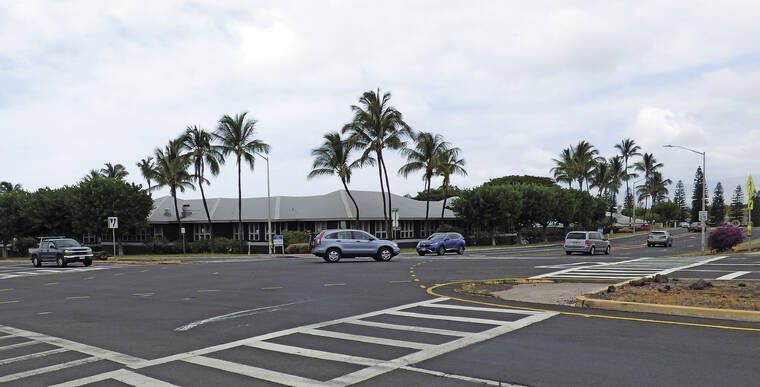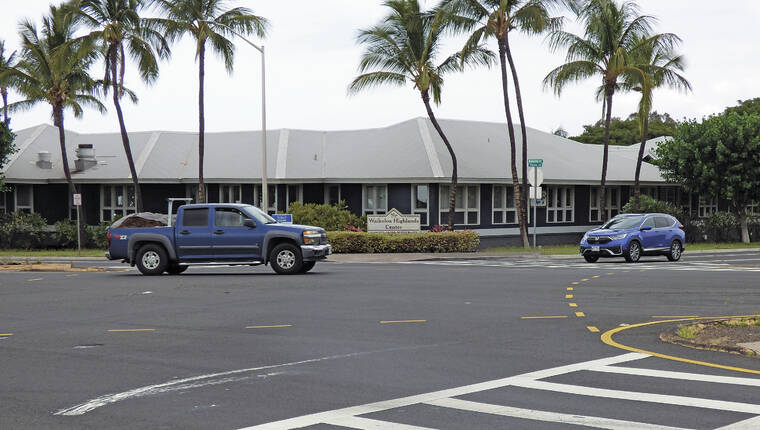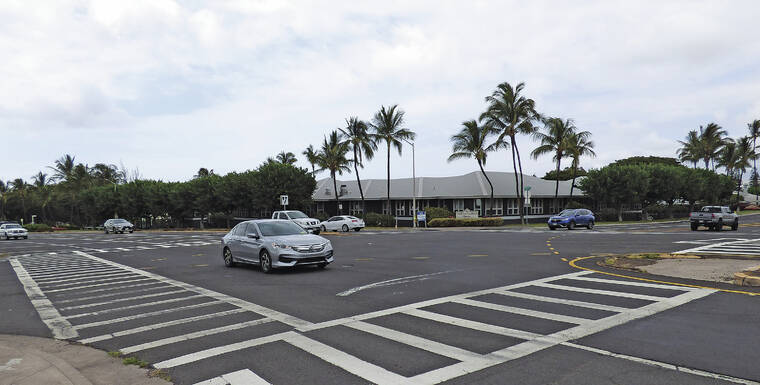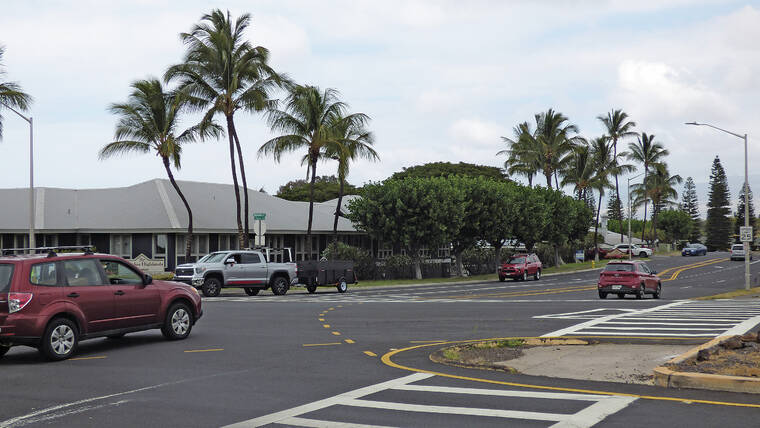Traffic signals or roundabout in Waikoloa? Study lays out pros and cons

Consultants hired by the county to evaluate the best alternative for the intersection of Waikoloa Road and Paniolo Avenue, seen here Monday afternoon, seem to be leaning toward a roundabout rather than traffic signals. (Chelsea Jensen/West Hawaii Today)

Consultants hired by the county to evaluate the best alternative for the intersection of Waikoloa Road and Paniolo Avenue, seen here Monday afternoon, seem to be leaning toward a roundabout rather than traffic signals. (Chelsea Jensen/West Hawaii Today)

Consultants hired by the county to evaluate the best alternative for the intersection of Waikoloa Road and Paniolo Avenue, seen here Monday afternoon, seem to be leaning toward a roundabout rather than traffic signals. (Chelsea Jensen/West Hawaii Today)

Consultants hired by the county to evaluate the best alternative for the intersection of Waikoloa Road and Paniolo Avenue, seen here Monday afternoon, seem to be leaning toward a roundabout rather than traffic signals. (Chelsea Jensen/West Hawaii Today)
Consultants hired by the county to evaluate the best alternative for the intersection of Waikoloa Road and Paniolo Avenue seem to be leaning toward a roundabout rather than traffic signals.
Consultants hired by the county to evaluate the best alternative for the intersection of Waikoloa Road and Paniolo Avenue seem to be leaning toward a roundabout rather than traffic signals.
The 98-page report that consultant Belt Collins completed Feb. 18 doesn’t make an outright recommendation for either alternative, but lists the advantages and disadvantages of each, including traffic studies and other data to back up the findings.
“A single-lane roundabout can provide an interim improvement, which can be expected to accommodate the projected traffic demands to the Year 2033,” the study states in its conclusion section. The (industry standard Manual on Uniform Traffic Control Devices) requires that engineering analysis and judgment must be used to develop alternative traffic controls to the installation of traffic signals, which will improve operations and safety. A roundabout can provide such an alternative traffic control.”
A roundabout, or traffic circle, would not be the less expensive option to construct, but it would be safer for vehicles and pedestrians, would reduce maintenance costs and would reduce vehicle emissions and fuel consumption from waiting at lights, according to the study. Disadvantages include a likely learning curve for drivers and pedestrians, the need to obtain land for rights-of-way and a reduction in response times for emergency vehicles negotiating the roundabout.
Advantages of a signalized intersection include it’s a less expensive initial costs than a roundabout and there is no need to buy or otherwise obtain land for rights-of-way. Because it’s a conventional intersection control, there’s no need for enhanced driver education. Disadvantages include longer waits at red lights, for both drivers and pedestrians, and greater conflict points for drivers and pedestrians. In addition, peak hour left-turn queues on eastbound Waikoloa Road and on southbound Paniolo Avenue may extend beyond the left-turn lane lengths, which are limited by existing driveways.
The Department of Public Works won’t settle on an alternative until it holds a community meeting with Kohala Councilman Tim Richards, sometime the week of March 14, a spokeswoman said Monday.
“The report indicates that a signalized intersection or a two-lane roundabout would both provide long-term mitigation measures for the intersection of Waikoloa Road and Paniolo Avenue/Pua Melia Street,” the spokeswoman said.” DPW has not yet made a final recommendation of one option over the other.”
A one-lane roundabout would cost an estimated $3.6 million, compared to $2.8 million for traffic signals for a 10-year solution. Land acquisition would be required for the roundabout, but not the signalization.
‘The single-lane roundabout would consist of a one-lane circulatory roadway with one-lane entries and exits on all legs of the roundabout. Right-turn bypass lanes would be provided from southbound Paniolo Avenue to westbound Waikoloa Road, and from westbound Waikoloa Road to northbound Paniolo Avenue.
“I am very sympathetic with what the community wants,” Richards said, adding that a previous community meeting found about a 50-50 split on which is the best alternative. “No matter what we do, half will think we should have gone the other way.”
The study also costs out an ultimate option for 20 years down the road that would require a two-lane roundabout and more traffic signals. Those estimates come in at $4.4 million and $4 million respectively.
However, if the state or federal government funds a long-anticipated extension to Daniel K. Inouye Highway, a one-lane roundabout may be sufficient.
Richards said he continues to push elected officials for funding for the road, “like an annoying little mosquito.”
That project, at an estimated cost of $125 million, seeks to extend the cross-island route, known colloquially as Saddle Road, from its current terminus at Mamalahoa Highway near the South Kohala-North Kona boundary to Queen Kaahumanu Highway. The approximately 10.5-mile extension was expected to take about two years to construct once work is underway.
Waikoloa Road is heavily traveled by cross-island commuters, particularly those heading to the South Kohala resort area via Saddle Road. In addition, Waikoloa Road is the main route for truckers heading cross island back from West Hawaii, unless they are coming from Waimea or head mauka out of Kona via Mamalahoa directly to Saddle Road.
Further, with the county trucking the trash now, there are even more large vehicles coming down that roadway. Until Saddle Road is extended to Queen Kaahumanu Highway from its current terminus at Mamalahoa Highway, Waikoloa Road will remain a heavily traveled route.


